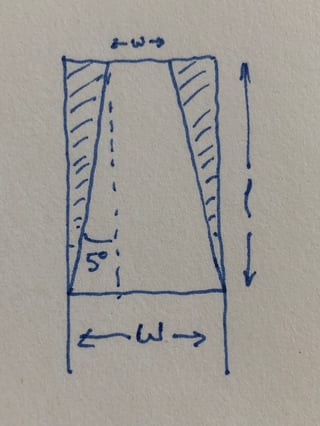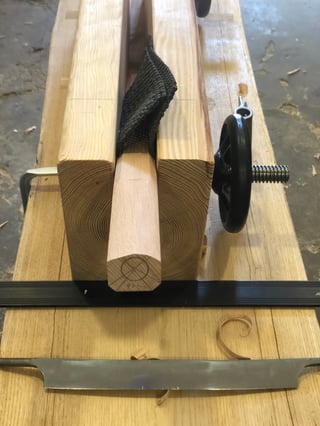I’ve got a Veritas tapered tenon cutter and feel like I am missing something obvious for using it efficiently.
Suppose I have a square chair leg 4 cm (1 1/2 in) thick, and I want to create a tapered tenon on it. The cutter is about 3 cm (1 1/8 in) at the wide end and about 1.6 cm (5/8 in) on the narrow end. Obviously, I need to remove some material first to start using the cutter. I have 2 very closely related questions:
Which shape should I impart on the leg before applying the cutter? Reduce to a cylinder that barely fits the wide end? Reduce to a cone with approximately the same included angle as the cutter? A cone with a smaller angle?
What is an efficient way to achieve the above shape? I have chisels, block & jack planes, a flat bottom spokeshave, a travisher, rasps, hand saws. I don’t have a lathe, or a drawknife, or a bandsaw (any of those seem like they would save a lot of effort). I could consider getting a drawknife.
What I’ve tried so far was to reduce to a cone with approximately the right angle. A wide chisel with the bevel up removes the initial material quickly, then a spokeshave to refine. (I’ve tried the jack plane but it’s a bit heavy to go back and forth on such a short section.) Then apply the cutter, inspect the marks it left where it stopped, thin the material up to the marks with a spokeshave, repeat. It took me about 1h per leg. I know things take what they take, but it feels like I am missing something and could be done much faster!








